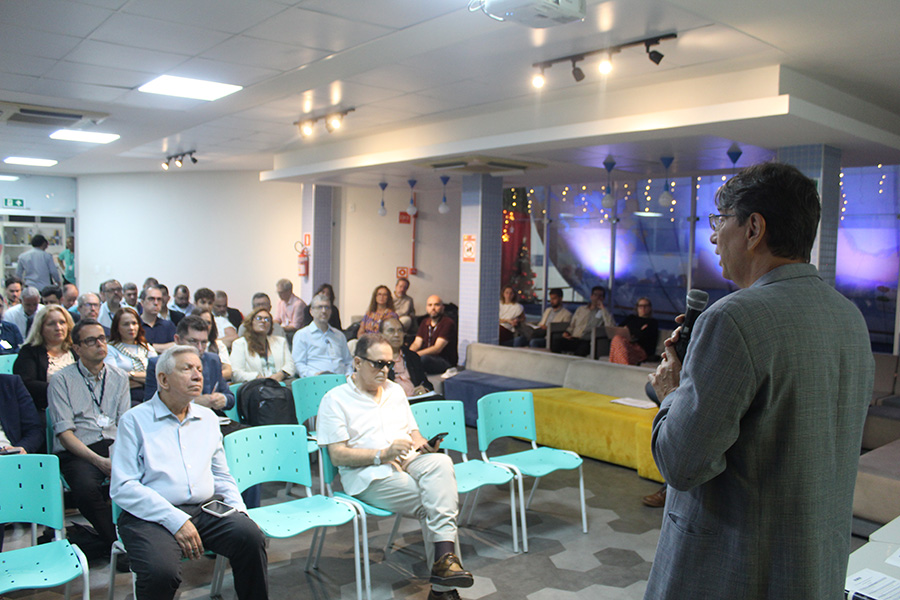Continuous PNAD
Unemployment retreats to 13.7% and reaches 14.1 million in the quarter up to July
September 30, 2021 09h00 AM | Last Updated: October 04, 2021 12h27 PM

The unemployment rate dropped to 13.7% in the quarter ended in July, a reduction of 1.0 percentage points compared to the quarter ended in April. This corresponds to 14.1 million people lining up for a job in the country. The data are from the Continuous National Household Sample Survey (PNAD), released today (Septemebr 30) by the IBGE.
The retreat in the rate was mainly influenced by the increase in the number of employed persons (89.0 million), which advanced 3.6%, with 3.1 million more in the period. As a result, the employment-population ratio increased from 1.7 percentage points to 50.2%. “It is the first time, since the beginning fo the quarter ended in April 2020, that the employment- population ratio stands above 50%, which indicates that more than half of the working age population is employed in the country”, highlights the survey analyst Ms. Adriana Beringuy.
There was a increase in the employment with a labor contract in the private sector and in the informal market, coupled with the expansion maintained by the self-employed workers without a CNPJ record and of the labor without a labor contract in the private sector. That even caused the informality rate to rise from 39.8% in the previous quarter to 40.8% in the quarter ended in July.
Employment with a formal contract increases 3.5%, with 1.0 million more persons,totaling 30.6 million ib the quarter up to July. IN the comparison whit the same quarter last year, the amount increased 4.2%, with 1.2 more million persons. It is the first increase in employment with a formal contract since January 2020, in the annual comparison.
The number of employees in the private sector without a labor contract (10.3 million) grew 6.0% in the comparison with the previous moving quarter. In a year, that number increased 19.0% or 1.6 million persons.
Self-employment and domestic service hit records
Self-employment kept the upward trend and reached the record level of 25.2 million persons, an increase of 4.7%, with 1.1 million more persons. IN relation to the same quarter a year ago, the amount increased 3.8 million, a high of 17.6%. “This is type of employment which has grown more in the last quarters of the Continuous PNAD, although employment with a labor contract starts presenting more favorable results”, adds Ms. Beringuy.
Domestic work increased 7.7%, adding up 5.3 million persons. Against the same period a year ago, it grew 16.1%, i. e., 739 thousand more persons. The quarterly and annual expansions were the biggest ones in the entire employment time series for domestic workers.
Conversely, the category of employers (3.7 million) and of those employed in the public sector (11.8) did not have significant changes in both comparisons.
In a year, the employed population grew 7.0 million in the country. Ms. Beringuy observes, however, that this growth, although very significant, has as its base of comparison the same quarter of 2020, when employment was still very affected by the pandemic. “Although there has been successive growth along the quarters, showing recovery of employment, the employed population is below that of the pre-pandemic period by nearly 5.0 million workers”, says the IBGE analyst.
Employment grows for most economic activities
The increase in employment in the quarter closed in July advanced in six of the 10 groups of economic activities. None of them recorded losses. Construction advanced 10.3%, followed by Lodging and food (9.0%), domestic services (7.7%), Transportation, storage and mailing (4.9%) trade, repair of motor vehicles and motorcycles (4.5%) and agriculture, forestry, fishery and aquaculture (3.2%).
In the comparison with the same quarter last year, this growth was even more widespread. Of the 10 activities, eight advanced in the employment rate, with a highlight to construction (23.8%), Lodging and food (16.8%) and domestic services (16.5%). “Those last two activities had very strong losses in the pandemic. Those are activities still recovering their usual number of workers” observes Ms. Beringuy.
Informality drives rise of the employed population
Informal workers, which include those workers without a formal contract (either employed in the private sector or domestic workers), without CNPJ (either employers or self-employed) or unpaid workers, added up to 36.3 million persons and a rate of 40.8%. The rate was 39.8% in the previous quarter, with 34.2 million informal workers. That amount was smaller a year ago: 30.7 million and a rate of 37.4%, the lowest level of the series.
“In a year, the number of informal workers grew nearly 5.6 million. The advance of informality has brought the recovery of employment in the Continuous PNAD”, explains the analyst. “Although there has been a quite sharp increase in the period, the number of informal workers is still far from the top recorded in the quarter coled in October 2019, when there were 38.8 million informal workers,” she adds.
Underutilization retreats, but underemployment hits new record
The contingent of underutilized workers, who are those unemployed, time-related underemployed or in the potential workforce, was of 31.7 million, a reduction of 4.7% in relation to the previous quarter (33.3 million). The composite underutilization rate decreased 1.6 percentage points to reach 28.0%.
This decrease in the rate was influenced by the increase in the unemployment rate and in the number of the potential workforce. As for the time-related underemployed workers, those who work less hours than they could work, they hit a record of 7.7 million persons, an increase of 7.2%, with 521 thousand more workers. That indicator rose 34.0% in relation to the same quarter last year, when there were 5.8 million underemployed workers in Brazil.
Discouraged workers (5.4 million), those who gave up looking for a job due to the structural conditions of the market, reduced by 10.0% in the quarter closed in July over the quarter closed in April. In relation to the same period a year ago, this number had a reduction of 7.3%, when there were 5.8 million discouraged in Brazil.
Average earnings do not catch up with employment growth
Despite the growth in the employed population in the quarter up to July, the average real earnings of workers retreated 2.9% over the previous quarter and reduced 8.8% over the same quarter of 2020, standing at R$ 2,508. The real wage bill, which is the sum of all workers´ earnings, remained stable, hitting R$218 billion.
“There are more employed workers, but with lower salaries. That makes the wage bill to remain stable. Despite such an important growth of the employed population, the growth of the wage bill does not catch up with the expansion, due to the fact that the employed population gets smaller earnings, both in the quarterly and annual comparisons”, says the PNAD analyst.
More about the survey
The Continuous PNAD is the main monitoring instrument of the workforce in Brazil. The sample of the survey per quarter corresponds to 211 thousand households in Brazil. Nearly two thousand interviewers work in the survey in 26 states and in the Federal District, integrated into the data collection network of more than 500 IBGE branches. Tables with complete results are available at SIDRA database.

















